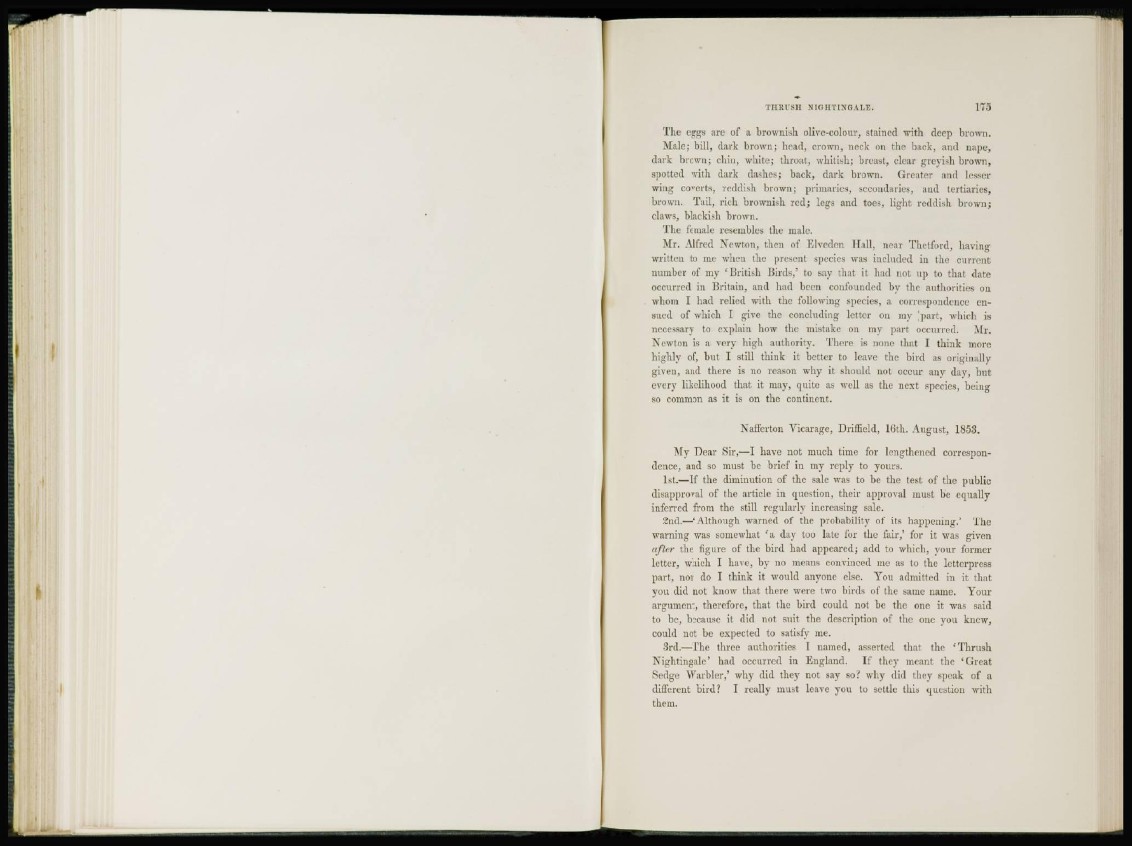
1 I
The eggs are of a brownish olive-colour, stained with deep brown.
Male; bill, dark brown; head, crown, neck on the back, and nape,
dark brown; chin, white; throat, whitish; breast, clear greyish brown,
spotted with dark dashes; back, dark brown. Greater and lesser
wing coverts, reddish brown; primaries, secondaries, and tertiaries,
brown. Tail, rich brownish red; legs and toes, light reddish brown;
claws, blackish brown.
The female resembles the male.
Mr. Alfred Newton, then of Elveden Hall, near Thetford, having
written to me when the present species was included in the current
number of my 'British Birds,' to say that it had not up to that date
occurred in Britain, and had been confounded by the authorities on
whom I had relied with the following species, a correspondence ensued
of which I give the concluding letter on my 'part, which is
necessary to explain how the mistake on my part occurred. Mr.
Newton is a very high authority. There is none that I think more
highly of, but I still think it better to leave the bird as originally
given, and there is no reason why it should not occur any day, but
every likelihood that it may, quite as well as the next species, being
so common as it is on the continent.
Nafferton Vicarage, Driffield, 16th. August, 1853.
My Dear Sir,—I have not much time for lengthened correspondence,
and so must be brief in my reply to yours.
1st.—If the diminution of the sale was to be the test of the public
disapproval of the article in question, their approval must be equally
inferred from the still regularly increasing sale.
2nd.'—'Although warned of the probability of its happening.' The
warning was somewhat ' a day too late for the fair,' for it was given
after the figure of the bird had appeared; add to which, your former
letter, which I have, by no means convinced me as to the letterpress
part, nor do I think it would anyone else. You admitted in it that
you did not know that there were two birds of the same name. Your
argument, therefore, that the bird could not be the one it was said
to be, because it did not suit the description of the one you knew,
could not be expected to satisfy me.
3rd.—The three authorities I named, asserted that the 'Thrush
Nightingale' had occurred in England. If they meant the 'Great
Sedge Warbler,' why did they not say so? why did they speak of a
different bird? I really must leave you to settle this question with
them.